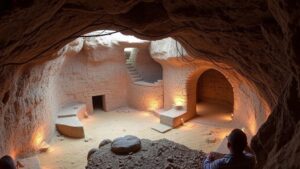Documenting encounters with local guides who pass down cryptic directions to ruins deep in wilderness areas.
Documenting Encounters with Local Guides: Unraveling Cryptic Directions to Ruins
The wilderness is often a canvas of untold stories, hidden relics, and ancient paths waiting to be rediscovered. When one traverses remote areas rich in history, they occasionally encounter local guides. These individuals are not mere providers of directions; they are custodians of knowledge, passing down cryptic hints and enigmatic instructions through generations. This article delves into the art of documenting these encounters, emphasizing the importance of the guides and the treasures they lead us to.
The Role of Local Guides
Local guides are often steeped in the history and folklore of their regions. Their knowledge is vital not only for navigation but also for understanding the cultural significance of the sites they lead travelers to. Unlike conventional map users, these guides often rely on oral traditions and personal experiences to navigate unfamiliar terrains.
- In the dense jungles of Guatemala, guides speak of hidden Mayan ruins that are concealed from the untrained eye, using landmarks such as specific trees or rock formations embedded in local lore.
- In the mountainous regions of Peru, seasoned guides use intricate systems of trails known only to locals, often marked by subtle indicators such as the positioning of stone piles or patterns in the vegetation.
Unearthing Cryptic Directions
The directions provided by local guides may seem cryptic at first, often involving natural elements or symbolic language that requires deeper understanding. An intriguing example can be drawn from the deserts of Jordan, where guides use phrases like follow the path where the sun sets behind the serpent rock. This poetic language not only serves as a navigational tool but also enriches the journey, adding layers of cultural significance to the experience.
Documenting Encounters and Directions
Effective documentation of these encounters lies in the ability to capture not only the directions given but also the context, the emotions, and the stories that accompany them. Here are methods to enhance documentation:
- Audio Recording: Capturing the guides voice allows for an authentic representation of their instructions and anecdotes.
- Visual Documentation: Photographs or sketches of the described landmarks can serve as visual aids when traversing the terrain.
- Mapping Techniques: Using GPS tools in conjunction with traditional maps can provide a clearer understanding of the terrain, corroborating the guides directions.
Historical Significance of Ruins
Understanding the historical context of the ruins we venture towards enhances the overall experience. For example, the ancient city of Machu Picchu was rediscovered in 1911 by Hiram Bingham, but local guides had known of its existence long before. As you follow the cryptic directions of a local, you become part of a lineage of explorers and custodians of history.
Challenges and Considerations
While documenting these encounters is rewarding, it’s essential to approach these experiences with respect and sensitivity. Here are some challenges to consider:
- Language Barriers: Misunderstandings can arise if there’s a significant language gap. Utilizing intermediate translators or learning basic phrases can mitigate this.
- Environmental Concerns: Many ruins are in fragile ecosystems. Guides often emphasize the importance of preservation, making it crucial to follow ethical practices during exploration.
Real-world Applications
Documenting encounters with local guides holds valuable implications across several fields:
- Academic Research: Scholars can utilize documented narratives for ethnographic studies, contributing to our understanding of cultural practices and heritage conservation.
- Tourism Development: Sustainable tourism promotes local economies by valuing the knowledge of local guides, ensuring that they are central to the tourism experience.
Conclusion
Encounters with local guides who share cryptic directions are an invaluable part of exploration, offering insights into both the physical and cultural landscapes we traverse. By documenting these experiences thoughtfully, we not only preserve the knowledge of these custodians but also cultivate a deeper appreciation for the histories embedded within the wilderness. So, as you embark on your next adventure, remember the importance of engaging with local guides–each encounter is a step into a story waiting to be retold.

